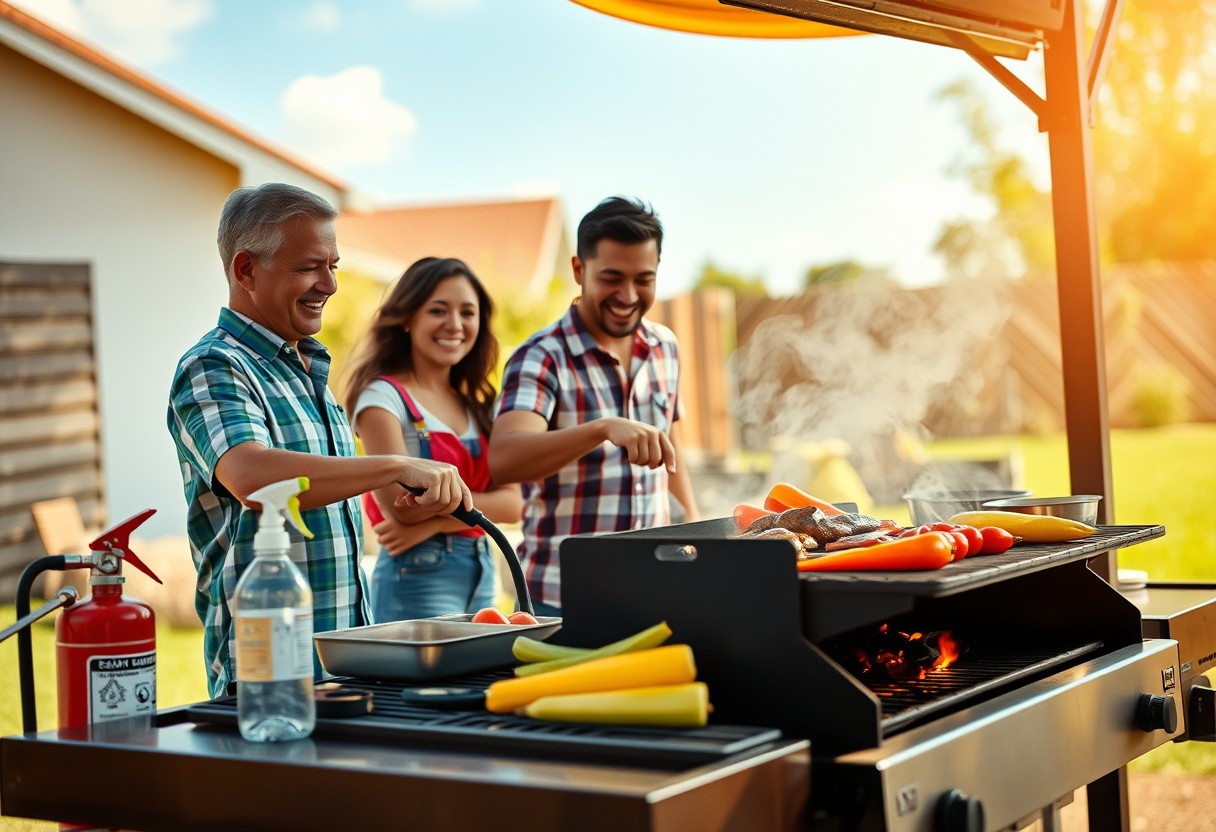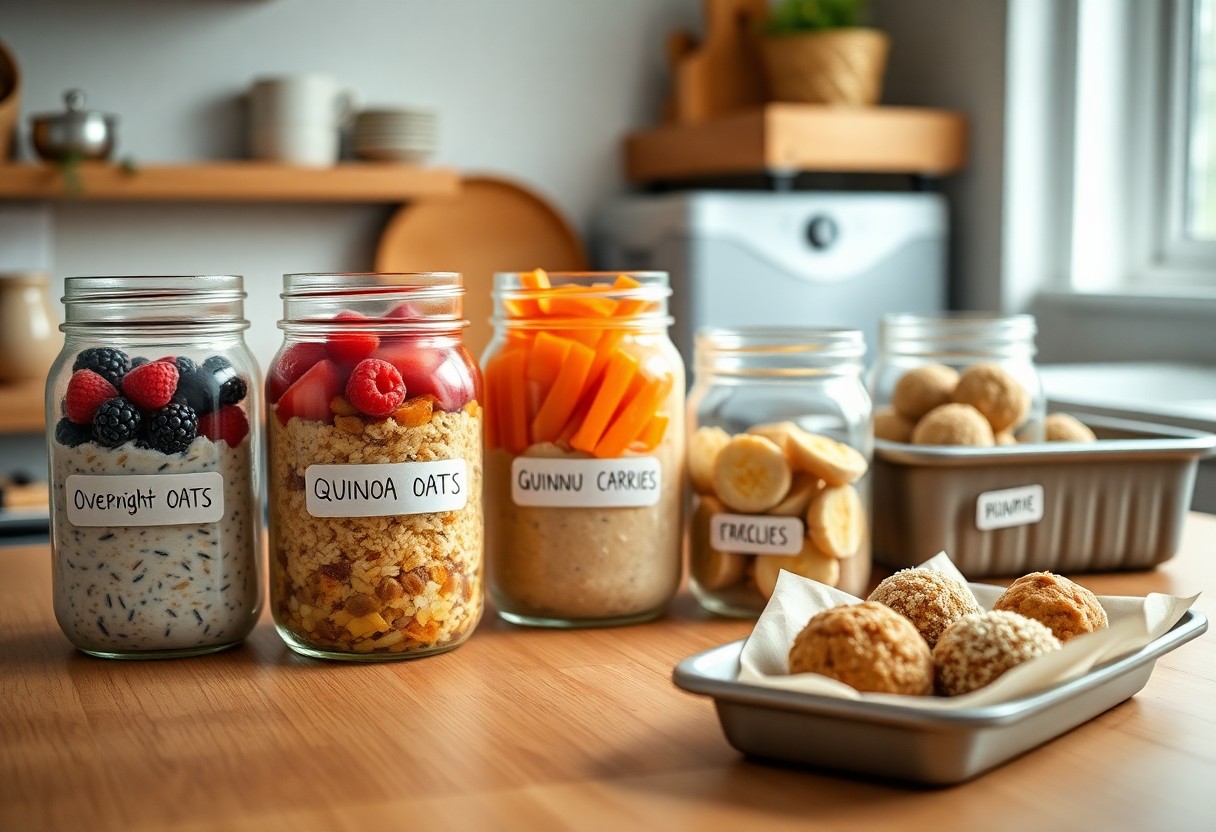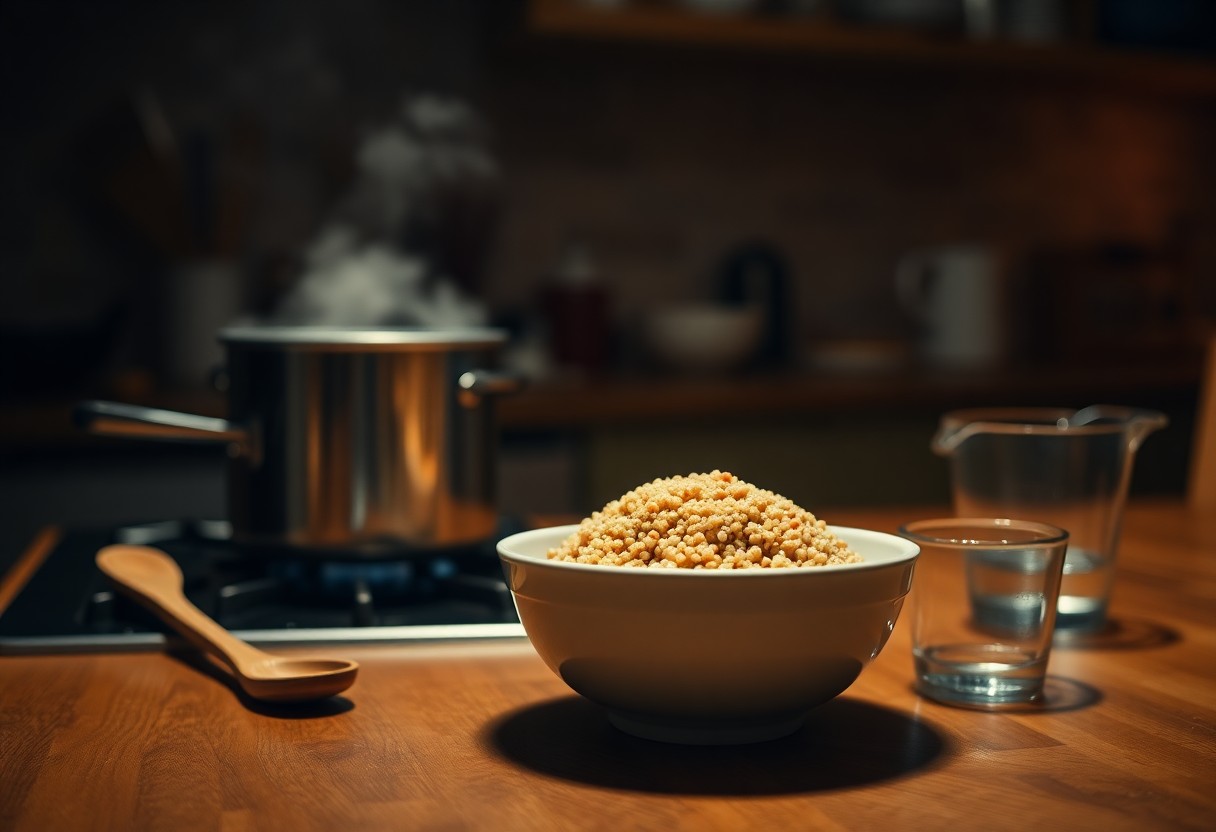There’s nothing quite like enjoying a summer barbecue, but it’s necessary to prioritize safety to prevent fires. By following a few key grilling safety tips, you can ensure your outdoor gatherings are not only delicious but also safe. In this guide, you will learn how to prepare your grill, select safe cooking locations, and implement proper maintenance practices to protect yourself and your loved ones. Whether you’re a seasoned griller or a novice, understanding and applying these safety measures will help you confidently enjoy your grilling experience.
Key Takeaways:
- Location Matters: Always place your grill at least 10 feet away from buildings, overhanging branches, or any flammable materials.
- Stay Attentive: Never leave your grill unattended while in use; keeping an eye on the grill helps prevent accidents.
- Check Equipment: Regularly inspect your grill for leaks, worn hoses, and other damages before use to ensure it’s safe to operate.
Understanding Grilling Hazards
A safe grilling experience begins with understanding the various hazards that can lead to fires. Taking a proactive approach will not only protect your property but also ensure the safety of those around you. Grilling hazards can range from equipment-related issues to environmental factors that create the perfect storm for a fire to ignite. It’s crucial for you to be aware of these risks before you light up your grill for the first barbecue of the season.
Common Causes of Grilling Fires
On average, nearly 10,000 grill-related fires occur every year, and many of these fires can be traced back to specific causes. One common cause of grilling fires is poorly maintained equipment, such as grease buildup or damaged hoses, which can lead to flare-ups and unwanted flames. Additionally, using your grill too close to flammable materials like wooden decks or patio furniture can also significantly increase the risk of a fire. Furthermore, leaving your grill unattended, especially when cooking high-temperature foods, is an open invitation for mishaps that can quickly escalate.
It’s important for you to adopt a thorough cleaning and maintenance routine for your grill. Check for gas leaks if you’re using a propane grill, and make sure to remove accumulated grease after each use. Keep in mind, being proactive about your grilling setup can mitigate many fire hazards that may otherwise go unnoticed.
Environmental Factors Contributing to Fires
Some environmental factors can greatly increase the likelihood of grilling fires. Windy conditions can easily spread flames, making it important for you to consider outdoor weather before starting your grill. Hot and dry weather can also make the surrounding area more susceptible to catching fire. Furthermore, if you live in an area prone to wildfires, additional caution is required while grilling during heightened fire seasons.
- High winds that make it difficult to control flames
- Dry grass or foliage in close proximity to your grilling area
- Increased temperatures during summer months that can lead to spontaneous flare-ups
The presence of these environmental factors should prompt you to make informed decisions about when and where to grill. Being aware and prepared can make a significant difference in fire prevention.
For instance, you should always position your grill in a safe location away from flammable materials. Keeping a water source or fire extinguisher handy can also be a lifesaver should an emergency occur. Other precautionary measures include checking first for local fire restrictions or advisories that could affect your grilling plans.
- Grilling on hard, non-flammable surfaces like concrete or stone
- Relocating the grill away from dry brush and trees
- Monitoring local weather conditions to avoid grilling in extreme situations
The close attention to environmental factors further reinforces the importance of safe grilling practices.

Choosing the Right Grill
There’s no denying the joy of grilling, but selecting the right grill can greatly enhance your outdoor cooking experience while also ensuring safety. Proper grill choice not only affects the quality of your food but also influences the risk of fire hazards. Before you light up your grill, it’s imperative to understand the different types available and their respective advantages and disadvantages.
Types of Grills: Pros and Cons
To make an informed decision, consider the following options:
| Type of Grill | Pros and Cons |
|---|---|
| Gas Grill | Pros: Quick to heat up and easy to control temperature. Cons: Requires a propane tank or natural gas line, which can pose a fire risk if not maintained. |
| Charcoal Grill | Pros: Provides a distinct smoky flavor and higher heat for searing. Cons: Takes longer to prepare and can create a mess with ash cleanup. |
| Electric Grill | Pros: Convenient and ideal for small spaces. Cons: Limited portability and may not achieve the same grilling flavor. |
| Pellet Grill | Pros: Versatile for grilling, smoking, and baking; good flavor from wood pellets. Cons: Requires electricity and can be more expensive. |
| Portable Grill | Pros: Great for camping and picnics, easy to transport. Cons: Smaller cooking area and may lack features of full-sized grills. |
Safe Placement of Grills
Safe placement of your grill is as crucial as the grill type you choose. You need to set up your grill at least 10 feet away from your home, deck railings, and any overhanging branches to minimize fire hazards. This distance provides a safe buffer that protects your property from the risk of flames or excessive heat. Additionally, it’s wise to consider the wind direction; placing the grill in a sheltered area can help avoid flare-ups caused by gusts that may carry embers or sparks.
Safe placement also includes ensuring that your grilling surface is sturdy and level. You want your grill to be stable while in use, preventing accidental tipping that could lead to spills and fires. Furthermore, always keep a fire extinguisher nearby and check local regulations regarding outdoor grilling safety, as they may offer additional insight into proper placement and operation.
For instance, when planning your barbecue, examine your outdoor space to ensure that no flammable materials, like wicker furniture or propane tanks, are nearby. This careful consideration can prevent potential disasters and allow you to enjoy your grilling session with peace of mind.
Essential Grilling Safety Equipment
Not all grilling equipment is created equal, and understanding the necessary safety tools can make a significant difference in preventing fires and ensuring a safe grilling experience. You want to be proactive and equipped with the right gear before you fire up the grill. Essential items not only help in case of an emergency but also allow you to tackle grilling tasks with confidence.
Fire Extinguishers: Types and Maintenance
Safety measures include keeping a fire extinguisher close to your grilling area. There are mainly three types of fire extinguishers suitable for grilling: Class A (for ordinary combustibles like wood and paper), Class B (for flammable liquids such as grease), and Class K (for kitchen appliances). Make sure to check the label to ensure it’s suitable for grilling scenarios. Regular maintenance is key; you should inspect your extinguisher monthly, check its pressure gauge, and make sure it’s easily accessible. It’s advisable to replace it every 5-12 years, depending on the manufacturer’s recommendations.
| Type | Description |
|---|---|
| Class A | For ordinary combustibles like wood and paper. |
| Class B | Specifically for flammable liquids, such as grease. |
| Class K | Designed for kitchen appliances and cooking oils. |
| Inspection | Check pressure gauge and ensure accessibility monthly. |
| Replacement | Replace every 5-12 years as recommended. |
This understanding will prepare you not just for safe grilling but will also enhance your confidence in handling grilling emergencies should they arise.
Safety Gear for Grillers
An effective grilling experience extends beyond just the grill itself; protective safety gear is necessary to safeguard you from potential hazards. Consider wearing flame-retardant gloves to protect your hands from hot surfaces or flare-ups. A sturdy apron can shield your clothes from spills and splashes, adding an extra layer of protection. Safety goggles are a wise choice if you’re working with marinades that might splash or if you’re lighting charcoal, which could emit sparks.
Fire safety gear can go a long way in preventing injuries. Selecting items designed for heat resistance and durability is crucial to ensure you’re well-equipped for any grilling situation. By investing in quality gear, you not only shield yourself from heat and flames but also become a more responsible griller. Equip yourself with these safety necessarys to create a secure grilling environment and to enjoy your outdoor cooking experience fully.
Grilling Techniques for Fire Prevention
Preparing Your Grill for Safe Cooking
To ensure that your grilling experience is safe, it is vital to start by properly preparing your grill. Before you begin cooking, inspect your grill for any signs of wear and tear, such as rusted components or leaks in gas lines. If you’re using a charcoal grill, make sure to use only the recommended charcoal lighter fluid and never add it once the coals are already burning. Keep your grill at least ten feet away from structures, overhanging branches, or anything else that could catch fire.
Cooking on a clean grill is also imperative for fire prevention. Grease buildup can ignite and cause flare-ups, which may lead to uncontrolled flames. Make it a habit to scrape down your grill grates and empty the grease tray after each use. A clean grill is not only safer but also enhances the flavor of your food, making your grilling experience even more enjoyable.
Proper Food Preparation and Handling
Grilling is not just about cooking; it’s also about how you handle your food prior to grilling. Grilling requires you to be aware of cross-contamination, especially when working with raw meats. Always use separate cutting boards, utensils, and serving dishes for raw and cooked foods to avoid the risk of bacteria spreading. Keeping your food preparation area clean can significantly reduce the chances of problematic flare-ups caused by food scraps and grease.
Grilling meats to the right internal temperatures is another critical component of safe grilling practices. Understanding how to marinate and prepare your ingredients ensures flavor without unnecessary fire hazards. Additionally, you should refrain from leaving raw meats at room temperature for extended periods, as this can promote the growth of harmful bacteria that could impact your health and cooking.
Monitoring Cooking Temperatures
There’s no denying that monitoring cooking temperatures is paramount in preventing flare-ups as well as ensuring food safety. Using a meat thermometer allows you to gauge the internal temperature of your cooked food accurately, preventing both undercooking and unnecessary char. Familiarize yourself with the safe cooking temperatures for various meats to keep your grilling experience safe and delicious.
| Food Item | Safe Internal Temperature |
|---|---|
| Poultry (Chicken, Turkey) | 165°F (75°C) |
| Ground Meats (Beef, Pork) | 160°F (70°C) |
| Beef, Veal, Lamb (Steaks & Chops) | 145°F (63°C) |
| Pork | 145°F (63°C) |
Another critical aspect of monitoring is keeping an eye on how your food cooks. If you notice flames shooting up after adding marinated items to the grill, don’t panic. Move your food to a cooler part of the grill and close the lid to help extinguish the flames quickly. It’s imperative to have a spray bottle of water at hand to manage small flare-ups efficiently without losing that beautiful char you desire.
| Tip | Description |
|---|---|
| Move Food | Shift items to a cooler part of the grill immediately. |
| Close Lid | Use the grill lid to smother small flames. |
| Water Spray | Keep a spray bottle handy for quick extinguishing. |
Safe Practices While Grilling
Many people enjoy the thrill of grilling, but it’s vital to prioritize safety to prevent any unfortunate incidents. Implementing safe practices while grilling can protect you, your loved ones, and your property from potential fire hazards. By staying educated and proactive, you can ensure that your grilling experience is enjoyable and free of the dangers of fire.
Keeping the Grill Clean and Grease-Free
An vital part of safe grilling is maintaining a clean and grease-free grill. Grease buildup can lead to flare-ups, which may ignite and cause uncontrollable fires. Regularly cleaning the grates, trays, and the entire grill surface will not only help to minimize the potential for fires but also improve the flavor of your food. Utilize a grill brush after each use to remove any residue and be sure to empty grease traps before starting your next grilling session.
Taking the time to inspect your grill and clean it before use can save you from dangerous fire situations. Look for any signs of wear or damage, such as cracked hoses or faulty connections, as these can also contribute to fire risks. With a spotless and well-maintained grill, you’ll be able to enjoy a safe and delicious cooking experience.
Importance of Supervision While Grilling
Some of the most crucial moments while grilling occur when you’re monitoring the heat and cooking process. Supervision is vital as it allows you to respond quickly to any unexpected events, such as flare-ups or smoke, that could lead to a fire. Steering clear of distractions is key; never leave your grill unattended, even for a short period. Having someone nearby to assist or keep an eye on the grill is a good practice to adopt.
Supervision is about having a continuous awareness of what’s happening with your grill. Always be on the lookout for any signs of excessive smoke or flames. If you notice anything unusual, act swiftly to address the situation before it escalates into a hazard.
Dealing with Fires: What to Do If Fire Occurs
Now that you understand the importance of proper supervision, knowing how to deal with a fire should something go wrong is crucial as well. If a fire does occur, the first step is to turn off the grill immediately if it is safe to do so. Using a fire extinguisher designated for kitchen use can effectively manage small flames. Never use water on a grease fire, as this can exacerbate the situation.
In the event that the fire grows larger and uncontrollable, evacuate the area and call for emergency services. Always prioritize safety over attempting to douse a flame that has escalated beyond your control. Unforeseen circumstances can happen, and it’s vital to have a plan in place to handle them effectively.
Fire emergencies can be frightening; however, having a fire extinguisher nearby and understanding how to use it can significantly enhance your safety measures. Taking these precautions will not only protect you but also enhance your overall grilling experience.

Post-Grilling Safety
Despite the fun and joy that grilling can bring, it’s crucial to prioritize safety even after the last burger has been served. Understanding how to properly extinguish your grill and store your equipment can significantly reduce the risk of accidental fires and ensure a safe environment for your home and family. Neglecting these imperative practices can lead to dangerous situations that you can easily avoid with a little diligence.
Properly Extinguishing Charcoal and Propane Grills
One of the first steps you should take after grilling is to properly extinguish your charcoal or propane grill. For charcoal grills, make sure to allow the coals to cool completely before disposing of them. You can do this by closing the grill lid and vents to suffocate the fire. Once the coals are cool to the touch, you can safely dispose of them in a metal container—not a plastic one—to prevent any incomplete combustion or flare-ups. If you are using a propane grill, turn off the gas supply and ensure that all burners are turned off, allowing the system to cool down naturally.
Storing Equipment Safely After Use
To ensure maximum safety post-grilling, it is imperative that you store your equipment in a safe and organized manner. Once you have extinguished your grill and allowed it to cool, disassemble or put away any accessories, such as utensils, grill covers, and cooking tools. Make sure to store everything in a designated area, ideally away from your home and any combustible materials. For propane tanks, store them outdoors in a well-ventilated space and ensure they are upright and secured to prevent any potential hazards.
This not only helps maintain the integrity of your equipment but also minimizes the risk of fire hazards. It’s wise to keep your grill in a dry area—preferably a shed or garage—where it’s shielded from moisture and extreme temperatures. Additionally, regularly checking for leaks and ensuring that there is no leftover fuel in your gas lines can further enhance safety. With these proactive steps, you can enjoy grilling while keeping your home and loved ones safe.
Summing up
Now that you understand the importance of grilling safety, it’s crucial to implement the practices discussed to create a safe cooking environment. Always keep a close eye on your grill when it’s in use and ensure that it is situated in a well-ventilated area, away from any flammable materials. Regularly inspect your grilling equipment for wear and tear and ensure that you have a fire extinguisher nearby or a bucket of water and sand just in case. By being vigilant and proactive, you can significantly reduce the risk of fire, providing you and your loved ones with peace of mind while you enjoy delicious grilled meals.
Moreover, understanding and adhering to the manufacturer’s instructions for your specific grill type, whether it be charcoal, gas, or electric, is vital to ensure safe operation. Always remember to carefully handle your fire starters and lighter fluids, and never leave your grill unattended, especially when children or pets are nearby. By following these guidelines and fostering a culture of safety around grilling in your household, you will not only protect yourself but also create memorable experiences with family and friends in a safe environment.





Leave a Reply